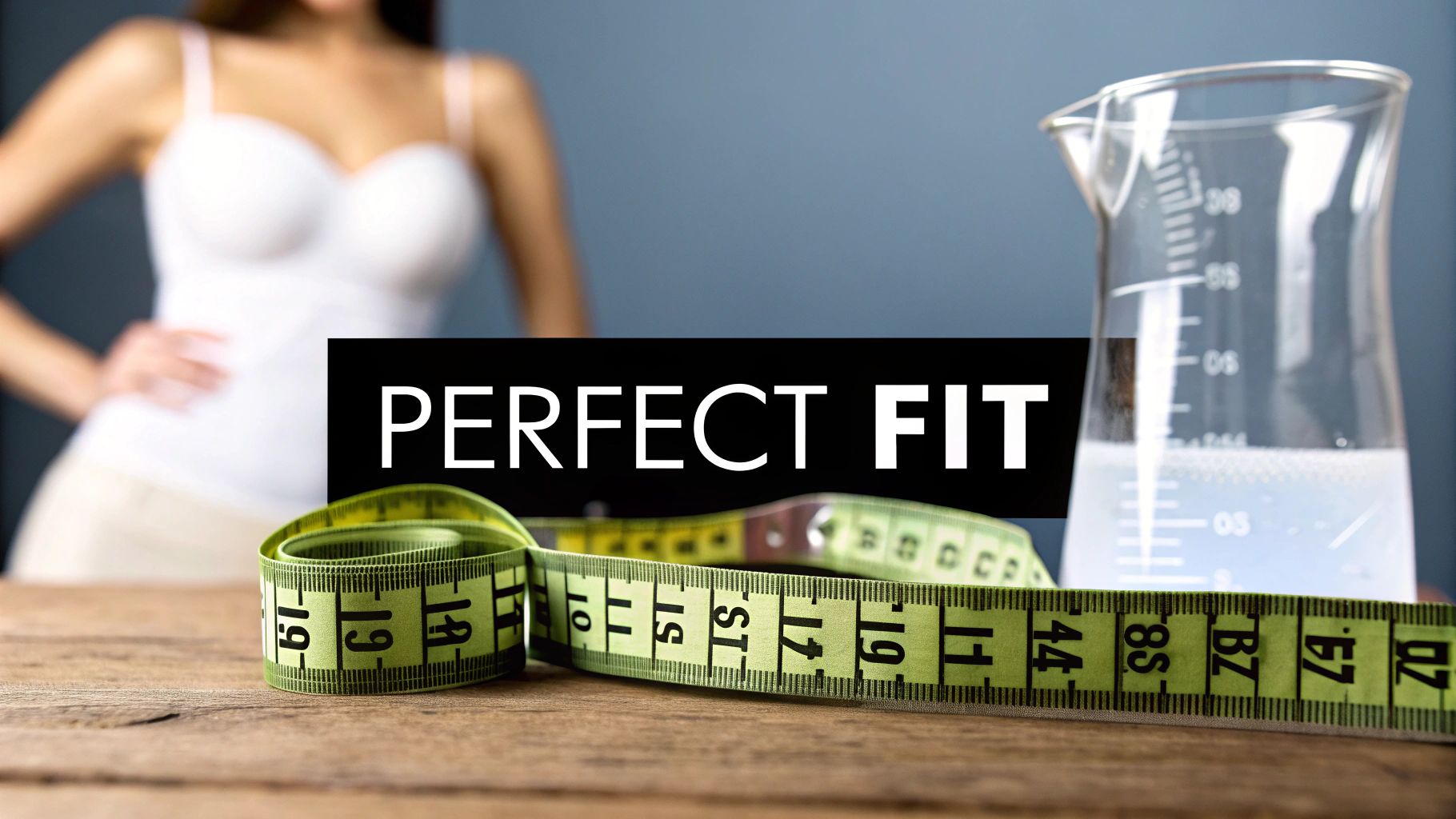
October 17, 2025
Breast Implant Size Guide: Find Your Perfect Fit
Discover our comprehensive breast implant size guide to choose the right CCs, profile, and shape. Make confident decisions for your ideal look!
Oct 17, 2025
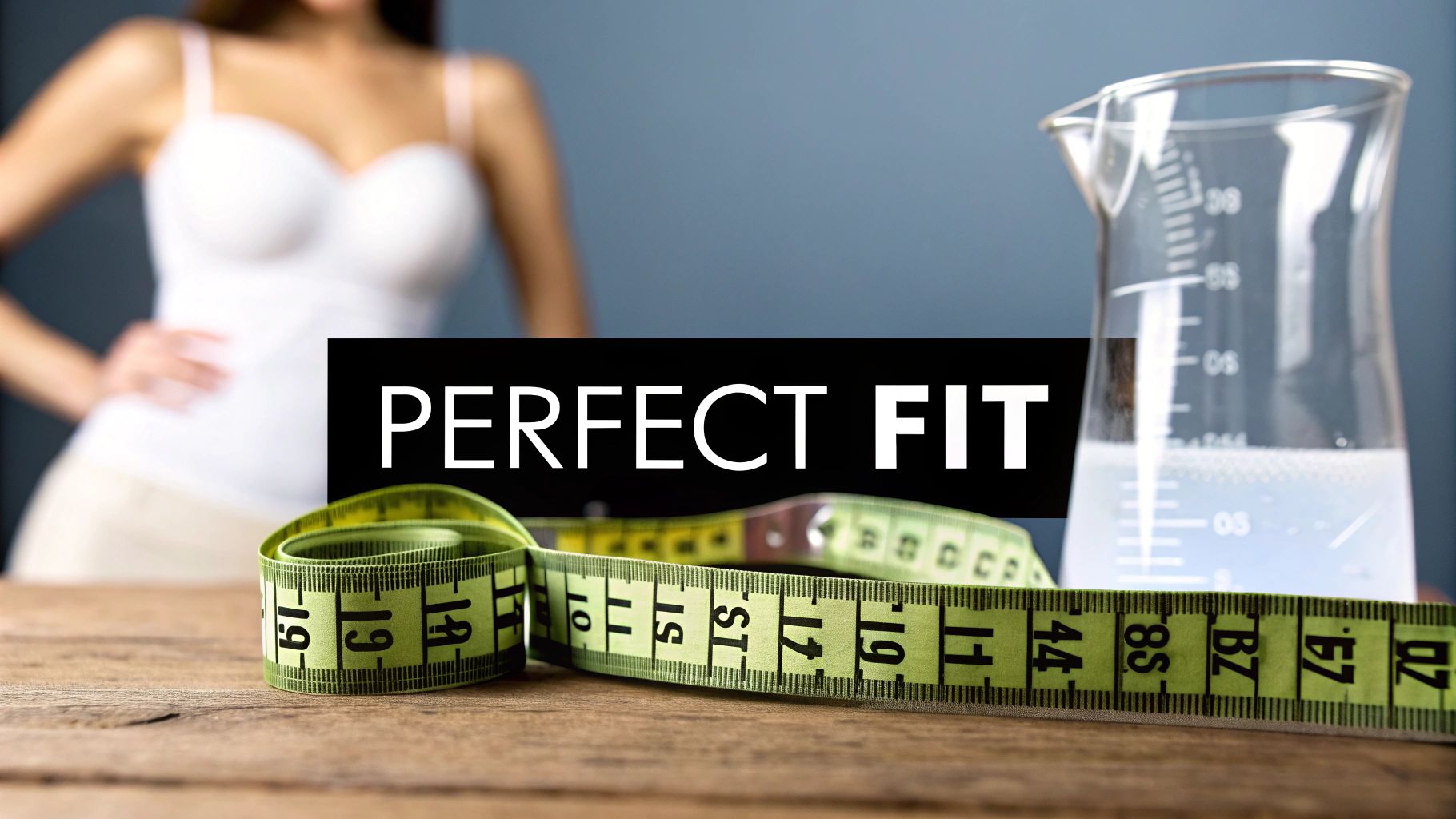
If you're starting to think about breast implants, the first and most important thing to grasp is how they're measured. Surgeons don't talk in cup sizes—they talk in cubic centimeters (cc). This is the single most crucial shift in thinking, and it's the real starting point for finding the perfect fit for your body and your goals.
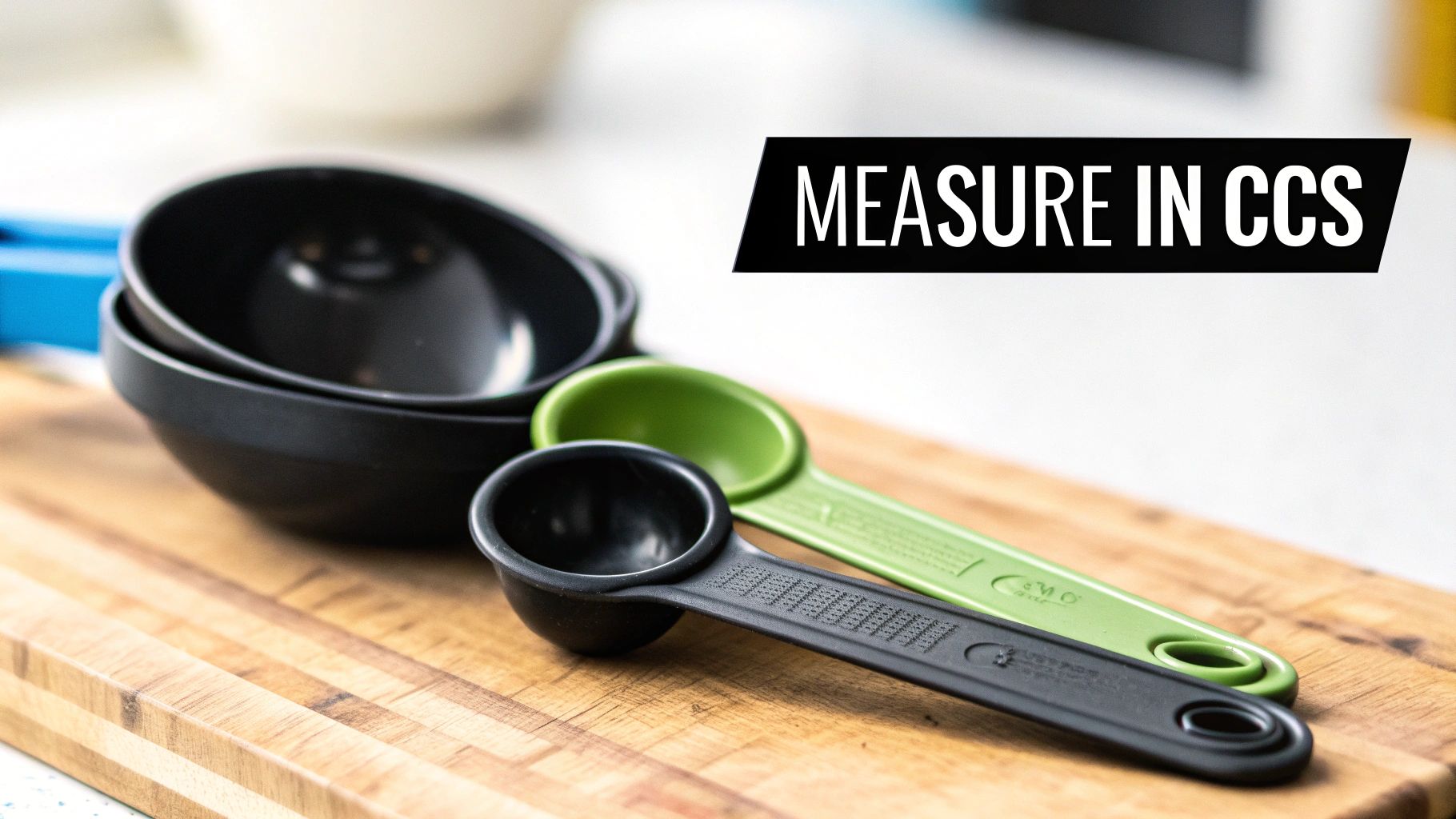
Welcome to the real world of breast implant sizing. The biggest hurdle for most people is letting go of the familiar A, B, C, and D cups we see in stores. In cosmetic surgery, everything comes down to precision, which is why your surgeon will speak a language based on volume, dimensions, and proportion—not lingerie tags.
The foundation of this new language is the cubic centimeter (cc). Think of it this way: a "C cup" is like saying you want a "medium-sized" car. It's a vague idea that means different things to different people. A 350cc implant, on the other hand, is like saying you want an engine with a specific displacement. It's a precise, measurable volume that is the same no matter what. This is how we get predictable, beautiful results.
To really get a feel for your options, you need to understand a few key terms that work together to create your final look. It’s not just about the CCs; it’s about how that volume is shaped and how it fits your unique body. Over the years, implant sizes have expanded to range from under 200cc to over 700cc, and modern tools like 3D imaging now help us personalize these choices more than ever.
Here are the fundamental building blocks of your implant decision:
To make this crystal clear, here’s a quick-reference guide to these essential terms.
Taking a moment to understand these concepts will completely change the quality of the conversation you have with your surgeon.
Understanding these three elements—volume, profile, and diameter—is far more important than targeting an arbitrary cup size. This trio of measurements is what truly defines the shape, size, and fit of your breast augmentation.
When you can talk about these specifics, you're no longer just hoping for a good outcome; you're actively collaborating on the surgical plan. You can learn more about how all these pieces come together by exploring our detailed guide to breast augmentation.
When you start thinking about breast augmentation, you probably have a goal like, "I want to go from a B cup to a D cup." It’s a perfectly normal way to think, and it gives your surgeon a great starting point for understanding your vision.
But in the operating room, precision is everything. That’s why we, as surgeons, shift the conversation from the familiar language of cup sizes to a far more accurate unit of measurement: cubic centimeters (cc).
Think of it this way: asking for a "D cup" is like asking a baker for a "medium" cake. What does that actually mean? For one person, it's a tall, eight-inch round cake. For another, it's a wide, single-layer sheet cake. The term is subjective, and that's exactly the issue with bra sizes.
The biggest reason surgeons don't plan procedures around cup sizes is simple: they are notoriously inconsistent. A 34C from Victoria's Secret can fit completely differently than a 34C from Wacoal. Even different styles from the same brand can vary wildly.
This lack of a universal standard makes cup sizes a completely unreliable target for a permanent surgical procedure. You wouldn't build a house with a rubber measuring tape, and we won't plan your surgery with a measurement that changes from store to store.
This infographic breaks down how we combine precise measurements to create a predictable surgical plan.
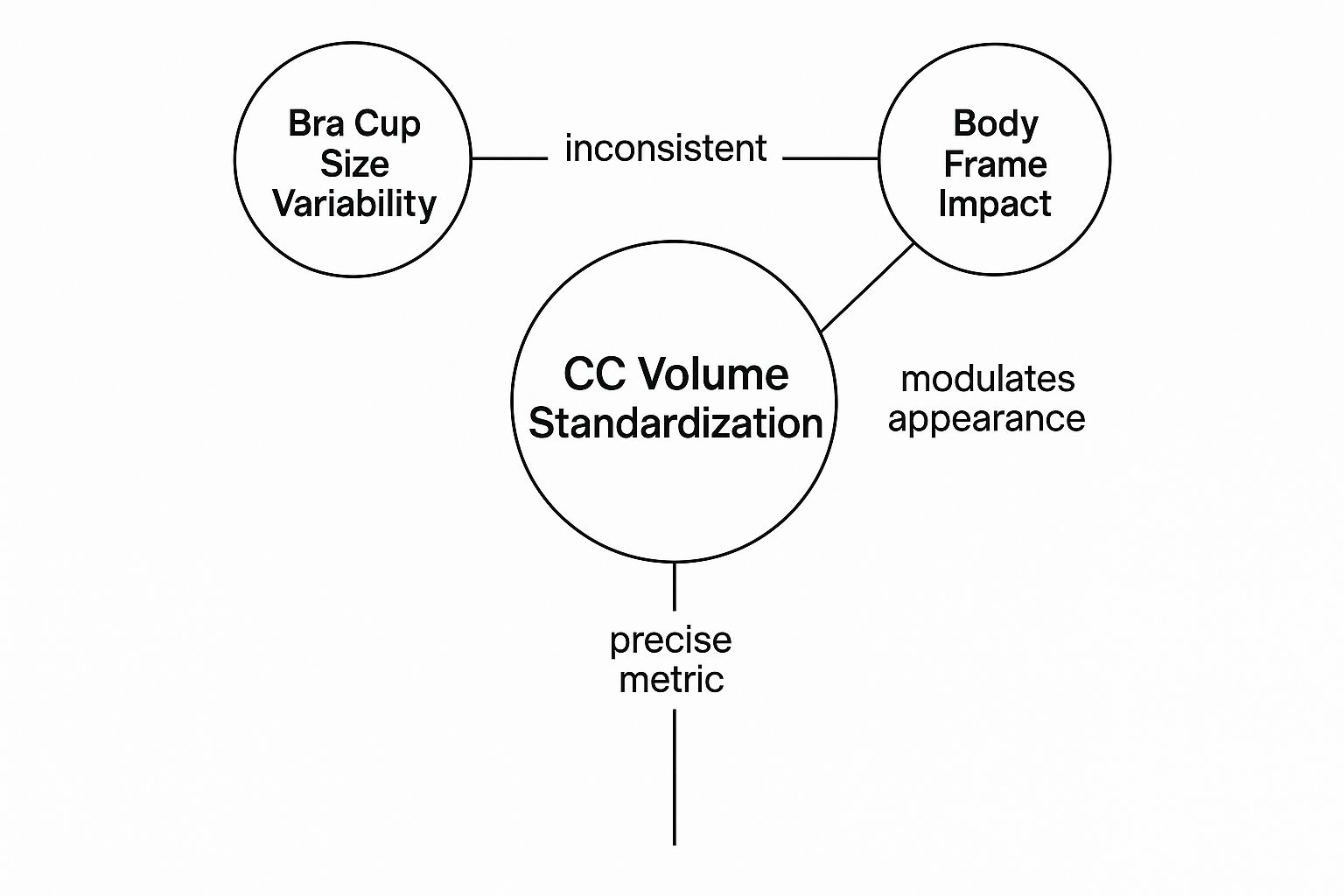
As you can see, focusing on the implant's volume in CCs and how it fits your specific body frame is what leads to a reliable and beautiful outcome—not chasing an unpredictable letter on a bra tag.
Cubic centimeters (CCs) are the universal language of volume in surgery. A 350cc implant is exactly 350cc of volume, no matter the manufacturer or the country. This precision is non-negotiable for achieving predictable, beautiful, and safe results.
This standardization removes all the guesswork. It ensures the exact volume you and your surgeon decide on during your consultation is the exact volume used to achieve your new look.
Even though we plan in CCs, we know that thinking in cup sizes helps you visualize the end result. So, here’s a helpful rule of thumb: it generally takes about 150cc to 200cc of implant volume to go up one full cup size.
This is just an estimate, of course, but it's a fantastic starting point.
For instance, if you're an A cup and want to be a full B cup, we might start looking at implants in the 200cc range. If you're a B cup dreaming of a D cup, your ideal size would likely fall somewhere between 350cc and 450cc.
To give you a clearer picture, this table provides a general guideline for how implant volume often translates to an increase in cup size.
This is a general guide to help you get a feel for what different volumes can achieve. Remember, your personal anatomy and starting size will heavily influence the final outcome.
It's so important to see this chart as a starting point, not a guarantee. The most critical factor isn't just the number of CCs—it's how that specific volume works with your unique body.
This is probably the single most important concept to understand: a 350cc implant will look completely different on two different people. This is where your surgeon's experience and artistic eye are indispensable.
Let's imagine two women who both want a 350cc implant.
This is precisely why a great surgeon takes detailed measurements of your chest width, evaluates your existing breast tissue, and checks your skin elasticity. From there, they can recommend a range of CCs that will look harmonious on you. The goal is never just "bigger"—it's to create a balanced, proportional result that you will love for years to come.
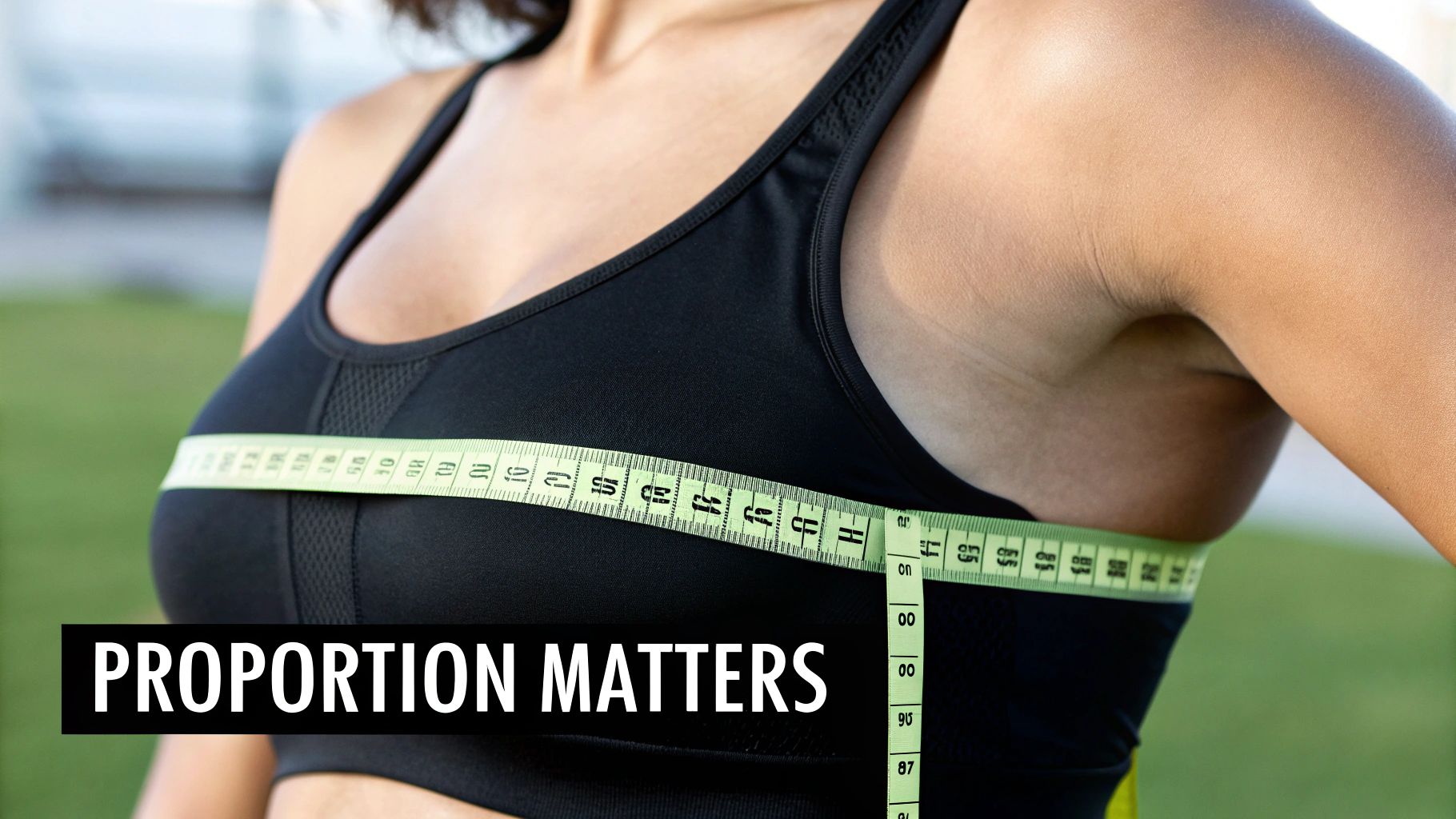
It’s a common misconception that choosing a breast implant size is like picking a number off a menu. The reality is far more personal. The perfect size for you is discovered through a careful, collaborative process with your surgeon, where your unique body is the blueprint.
This is where the science of aesthetics truly meets the art of plastic surgery. While we talk a lot about implant volume (CCs), it’s your body's existing proportions that really set the stage. These dimensions dictate which options will look balanced, beautiful, and completely natural on your frame.
Think of a skilled surgeon as an architect for your body. They take precise measurements to ensure the final result is not just beautiful, but structurally harmonious with the rest of your figure.
Long before you even talk about CCs, your surgeon will get out the calipers and start measuring your chest. The single most important measurement here is the breast base width—the horizontal dimension of your natural breast tissue where it meets your chest wall.
You can think of this as the "footprint" of your breast.
To get that seamless, natural look, the diameter of the implant needs to match this footprint almost exactly. If an implant is too wide for your base width, it can hang over the sides, creating an obviously "done" look or even causing visible rippling. On the flip side, an implant that’s too narrow won't fill out the space properly, leaving you without the fullness you were hoping for.
The goal is to find an implant that fits your body like a key in a lock. Your anatomy sets the boundaries, and the right implant works within those boundaries to create a seamless, proportional enhancement.
This is exactly why two people can bring in the same wish pic but walk out with completely different implants. A woman with a petite, narrow frame simply can’t accommodate the same wide implant that would look stunning on someone with a broader chest.
Beyond your bone structure, the quality of your soft tissue plays a huge role in what’s possible. Your surgeon will carefully assess two key factors here:
Essentially, your own tissue is the "wrapping paper" for the implant. Thicker, more elastic wrapping paper can securely and beautifully conceal a larger gift inside.
This personalized, anatomy-first approach is the cornerstone of modern breast augmentation. In fact, the market is projected to grow from USD 2.66 billion to over USD 5.16 billion by 2033, largely because these advanced techniques prioritize safe, proportional outcomes that are tailored to the individual. If you're interested, you can learn more about the factors behind the growth of the breast implants market.
Ultimately, the best guide for your ideal implant size is your own body. Your surgeon’s job is to synthesize all of this information—your chest width, tissue volume, skin quality, and of course, your personal goals—to recommend a range of sizes that will truly work for you.
Think of it as a partnership. You bring the vision for how you want to look and feel. Your surgeon brings the anatomical expertise to make that vision a reality, in a way that respects and complements your natural form. The perfect size isn't just a number; it's the one that creates perfect harmony.
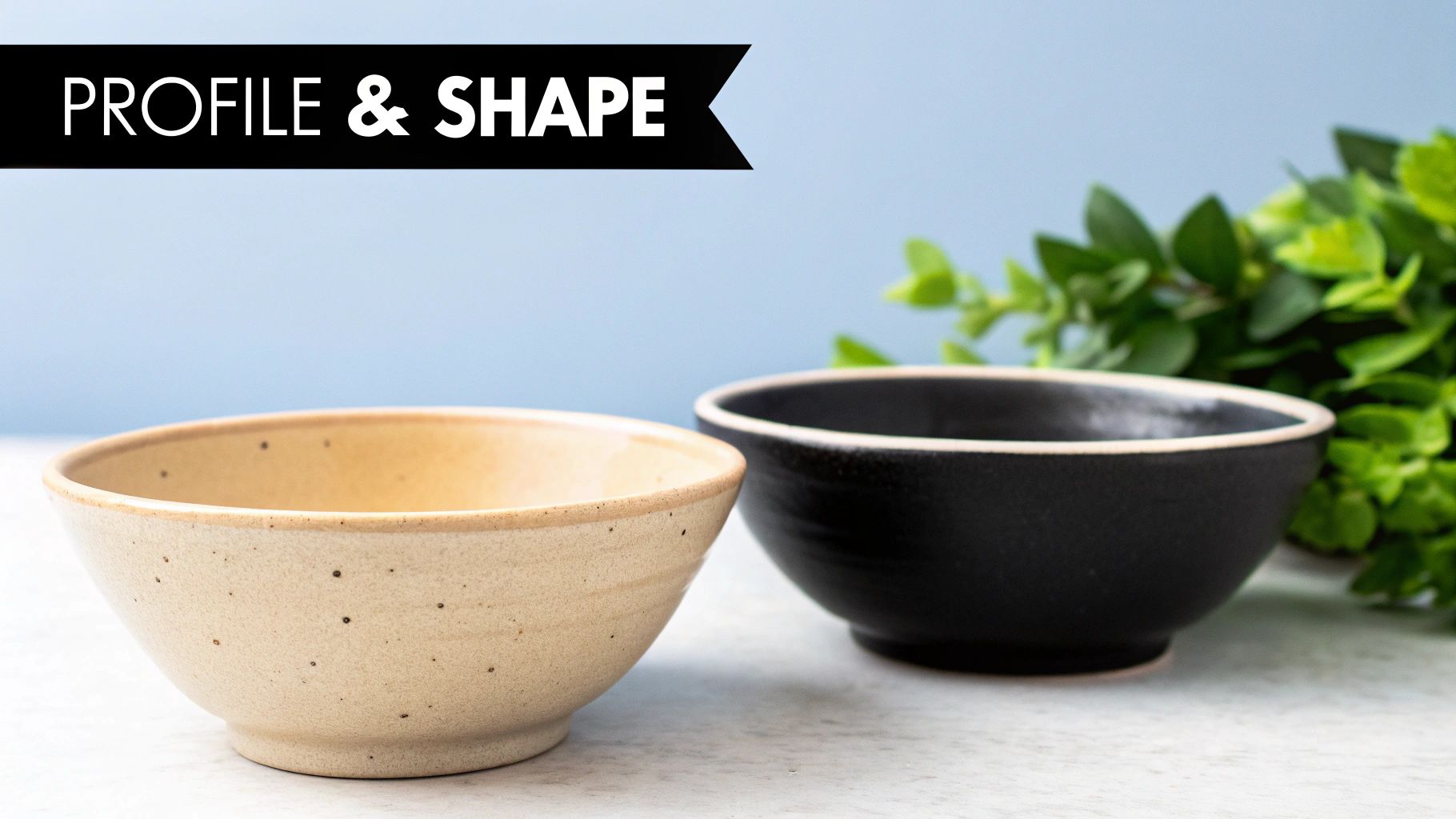
Once you and your surgeon have a good idea of the right volume (the CCs), the conversation gets a lot more interesting. Now it’s time to talk about the final look by choosing an implant profile and shape.
These two factors are every bit as important as the volume. Think of it this way: the CCs are the amount of water you have to fill a container. The profile and shape are the dimensions of that container. You can have a tall, narrow glass or a short, wide bowl—both can hold the same amount of water, but they create completely different silhouettes.
The implant profile is all about projection—how far the implant will extend forward from your chest wall when you're viewed from the side. For any given volume, you can choose from different profiles to fine-tune your final look.
Low Profile: These implants have the widest footprint on the chest and the least amount of forward projection. They offer a very subtle lift and fullness that spreads out more horizontally.
Moderate Profile: This is a very popular, middle-of-the-road option. It provides a beautiful balance that’s neither too flat nor too projected, giving a noticeable yet very proportional enhancement.
High Profile: With a narrower base and a lot of forward push, high-profile implants create a much rounder and more prominent breast shape. This is often the go-to choice for creating significant cleavage and that "upper pole" fullness, especially for women with a more petite frame.
Choosing a profile isn't just about how "big" you want to look; it's about what fits your body. A high-profile implant, for example, can give someone with a narrow ribcage the projection they want without the implant being too wide for their frame.
This is a key part of the conversation with your surgeon. Are you hoping for a soft, natural slope, or are you after a more defined and "perky" look? Your answer will point you toward the right profile.
Next up is the actual shape of the implant itself. The two main options are round and anatomic (which everyone calls "teardrop" because of its shape). Each one creates a completely different kind of breast contour.
Round Implants: These are the classic, most common choice. They are perfectly symmetrical, giving you equal fullness in both the upper and lower parts of your breast. This is how you get that full, "done" look with more pronounced cleavage and roundness on top—an aesthetic that many women love.
Teardrop (Anatomic) Implants: Just like their name suggests, these are shaped to mimic the natural slope of a breast. They are fuller at the bottom and gently taper off toward the top. This design creates a very soft, sloping transition from the chest wall, often resulting in an incredibly natural outcome.
Deciding between round and teardrop really boils down to your personal taste and your existing anatomy. If you want a subtle result that looks like you were born with it, a teardrop implant can be a fantastic choice. But if you’re looking for that bombshell fullness, a round implant is usually the way to go.
The implant material also influences this decision. You can dive deeper in our guide on choosing between saline and silicone breast implants. Ultimately, your surgeon will help you weigh the pros and cons of each shape to find the perfect match for the beautiful result you have in mind.
Picking a breast implant size from a chart of numbers can feel abstract and a little scary. It's tough to commit to a volume, like 350cc, without having a clue how it will actually look and feel on your body. Thankfully, modern plastic surgery has some amazing tools that take the guesswork out of the equation, giving you a realistic preview of your future self.
These visualization methods aren't just a cool bonus; they're a standard and essential part of a good consultation. They let you "try on" different looks so you can feel confident that the final result is exactly what you had in mind.
One of the most tried-and-true ways to see your new look is by using in-office sizers. This is all about getting a real, hands-on feel for things. Your surgeon will have you try on external sizers—think of them as silicone inserts that mimic the shape and volume of actual implants.
You'll slip these sizers into a special surgical bra or a snug sports bra. This simple step is incredibly eye-opening for a few reasons:
This tactile experience is a game-changer. I’ve seen so many patients come in set on one size, only to realize it feels too big or too small once they see it on their own frame.
For an even more high-tech preview, many top surgeons now use advanced 3D imaging systems like Vectra or Crisalix. This technology creates a stunningly accurate digital mock-up of your surgical results, effectively removing any lingering guesswork.
The process is simple. A specialized camera takes pictures of your chest from multiple angles to build a precise 3D model of your body. From there, your surgeon can use the software to show you how different implant sizes, shapes, and profiles will look on your unique anatomy. You can spin the model around, see yourself from the front and side, and directly compare options side-by-side.
This technology is incredibly empowering for patients. It helps you have a much clearer conversation with your surgeon. Instead of trying to describe your goal, you can just point to the screen and say, "That's it. That's the look I want." Seeing detailed breast augmentation before and after photos of women with a similar build can also be a huge help in setting realistic expectations.
Interestingly, what's considered "ideal" can change depending on where you are in the world. Research has shown that American patients tend to prefer larger implants. One study revealed that medium-sized implants (300–550 cm³) made up 69.3% of sales in the U.S., while patients in Europe leaned toward smaller volumes. You can read more about it in this comparative study on implant size preferences.
Ultimately, from simple sizers to sophisticated 3D imaging, these tools are all designed to get you and your surgeon on the exact same page. They turn what could be an anxious guessing game into an informed, confident, and even exciting choice.
You've done the hard work. You understand CCs, profiles, and how your own body's measurements create the canvas for your final look. Now it’s time to pull all those threads together. This checklist is designed to be your final gut-check, helping you and your surgeon lock in a decision that feels right.
Think of this as the last conversation you have with yourself before the big day. The aim here is total confidence—ensuring the choice you make is one you’ll still love years down the road.
Before we get lost in the numbers again, let's circle back to your core motivation. This has never been just about a size; it's about how you want to feel in your own skin.
Your Vision: How would you describe your ideal look in your own words? Try using terms like "natural," "athletic," "full and round," "subtle," or even "bombshell." When you bring in inspiration photos, make sure they feature women with a body frame similar to yours—that’s key.
Your Lifestyle: Be honest about how your choice will fit into your real life. If you're a dedicated runner, a marathoner, or love high-intensity workouts, think about how larger implants might feel. Your everyday comfort is just as crucial as how you look in a dress.
The Long Game: Where do you see yourself in 5 or 10 years? Our bodies and styles change. A choice that feels fantastic today should also feel right for the future you. This helps anchor your decision in lasting satisfaction, not just a passing trend.
Once your personal goals are crystal clear, it’s time to make sure you and your surgeon are speaking the same language. This is where you double-check all the nuts and bolts.
A great result is a shared vision. It’s born from that perfect intersection where what you want meets what is surgically smart and safe for your body.
Run through this list and make sure you can give a confident "yes" to every point:
Anatomy Check: Have you and your surgeon talked specifically about your chest width, the amount of breast tissue you have now, and your skin's elasticity? Do you understand how these factors limit or guide your options?
Implant Specs: Are you 100% clear on the chosen volume (CCs), profile (how much it projects), and shape (round or teardrop)? More importantly, can you explain why that specific combination is the best match for your anatomy and your goals?
The "Dress Rehearsal": Did you try on implant sizers in the office or see a 3D imaging simulation? Did that preview give you a jolt of excitement and look like the "you" you have in mind?
The Game Plan: Do you know exactly what the surgical plan is? This includes where the implant will be placed (over or under the muscle) and the location of the incision.
This isn't just a checklist; it's your key to walking into surgery feeling empowered and calm. By working through these points, you can be sure your final decision is a well-reasoned, collaborative choice—not a shot in the dark.
When you start diving into the details of breast implant sizing, a lot of very practical questions pop up. Getting straight answers is the best way to feel confident as you move forward, so let's tackle the most common questions we hear from patients.
As a rule of thumb, it takes somewhere between 120cc and 150cc to increase your breast size by about one full cup. That means adding 100cc will give you a noticeable boost, but it usually won't be enough to jump you up a whole cup size.
Of course, how that looks in the mirror depends entirely on your body. For a petite woman with a narrow frame and less natural breast tissue, 100cc can look like a pretty significant change. But for someone with a broader chest or more of their own tissue to begin with, that same 100cc will create a much more subtle enhancement.
The only real way to know what a number like "100cc" or "350cc" will look like is to try on implant sizers in your surgeon's office. It’s a hands-on experience that turns an abstract number into something you can actually see and feel on your own body.
Not quite. While your personal goals are the most important part of the conversation, your unique anatomy sets the boundaries for what's possible and what will look good. Your surgeon will take precise measurements of your chest, especially the width of your breast base, to figure out the maximum implant diameter your frame can support.
Going too wide or too heavy for your body isn't just an aesthetic issue. It can lead to real problems down the line, including:
Think of your surgeon's recommendation as a partnership. They're using their expertise to help you achieve your desired look in a way that is both beautiful and safe for your body.
Most patients tend to choose implants somewhere in the 300cc to 450cc range. For many women, this volume is what helps them land in the full C to D cup neighborhood.
But "popular" shouldn't be your guide. Honestly, the focus in modern breast augmentation has shifted away from chasing a specific number. It's all about finding the size that creates the most beautiful and balanced silhouette for your individual frame. It's better to focus on the final look you want, not the number on the box.
Yes, they absolutely will, and it’s a totally normal part of the process. Right after surgery, your breasts will look bigger, feel firmer, and sit higher on your chest than you might expect. That's all thanks to post-op swelling and muscle tightness.
Over the next few weeks and months, that swelling will completely disappear, and the implants will begin to settle into a more natural position. We call this the "drop and fluff" phase. Your final result will be a bit smaller and feel much softer than what you see right after surgery, so it’s important to be patient and trust the healing process.
At Cape Cod Plastic Surgery, Dr. Fater and his team are here to guide you through every single question. If you’re ready to explore what’s possible with an expert who will listen, we invite you to schedule your personalized consultation. Find your perfect fit with us.

October 17, 2025
Discover our comprehensive breast implant size guide to choose the right CCs, profile, and shape. Make confident decisions for your ideal look!
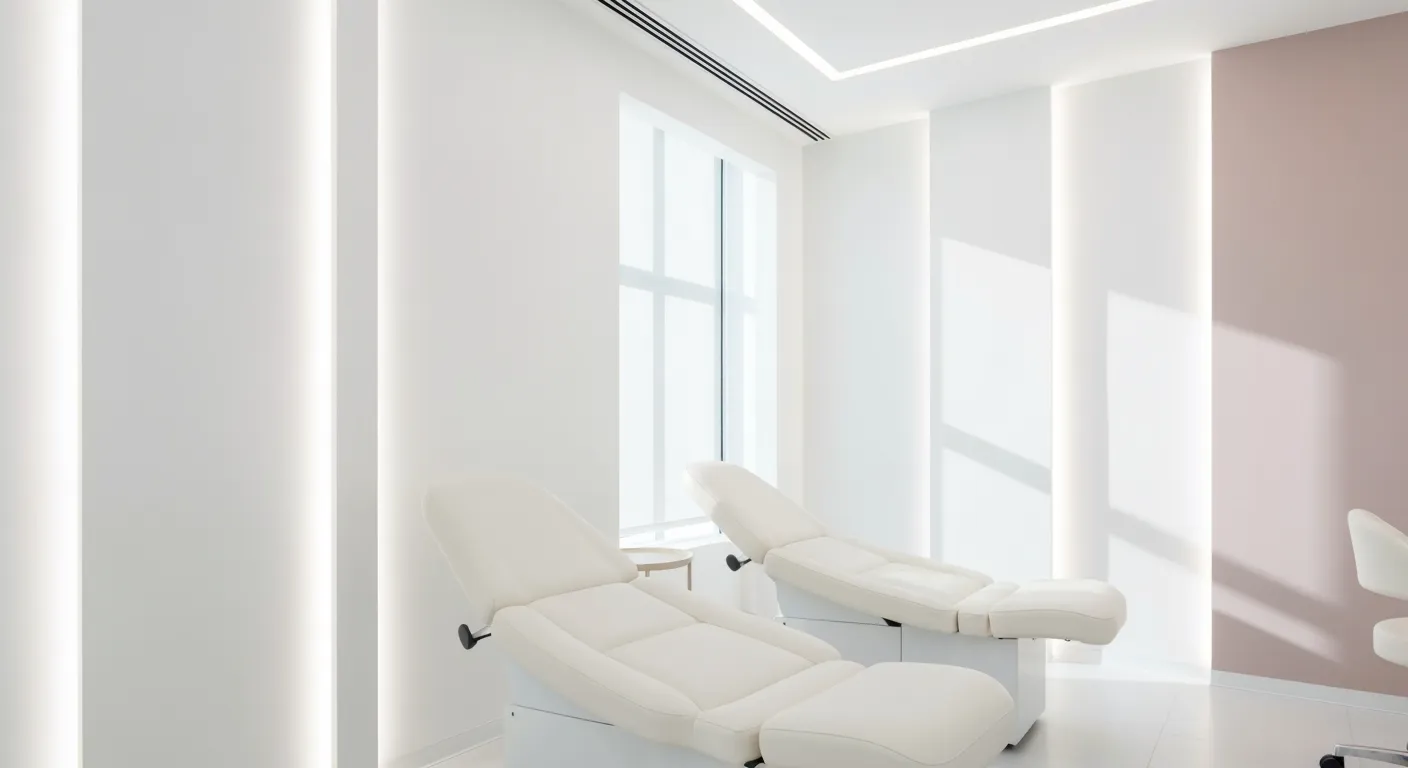
October 17, 2025
Demystifying Plastic Surgery: Essential Insights for Prospective Patients
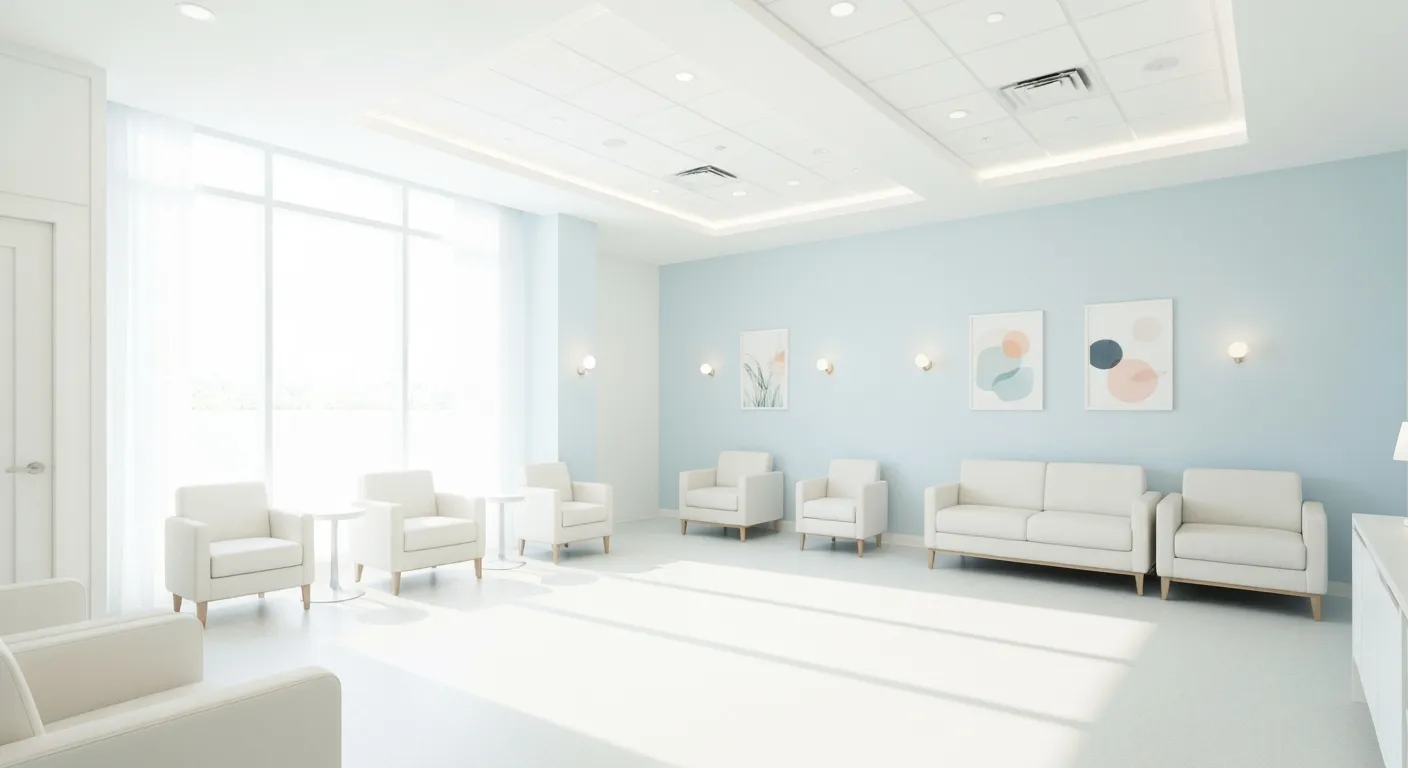
October 17, 2025
Your Guide to a Smooth and Speedy Recovery After Plastic Surgery